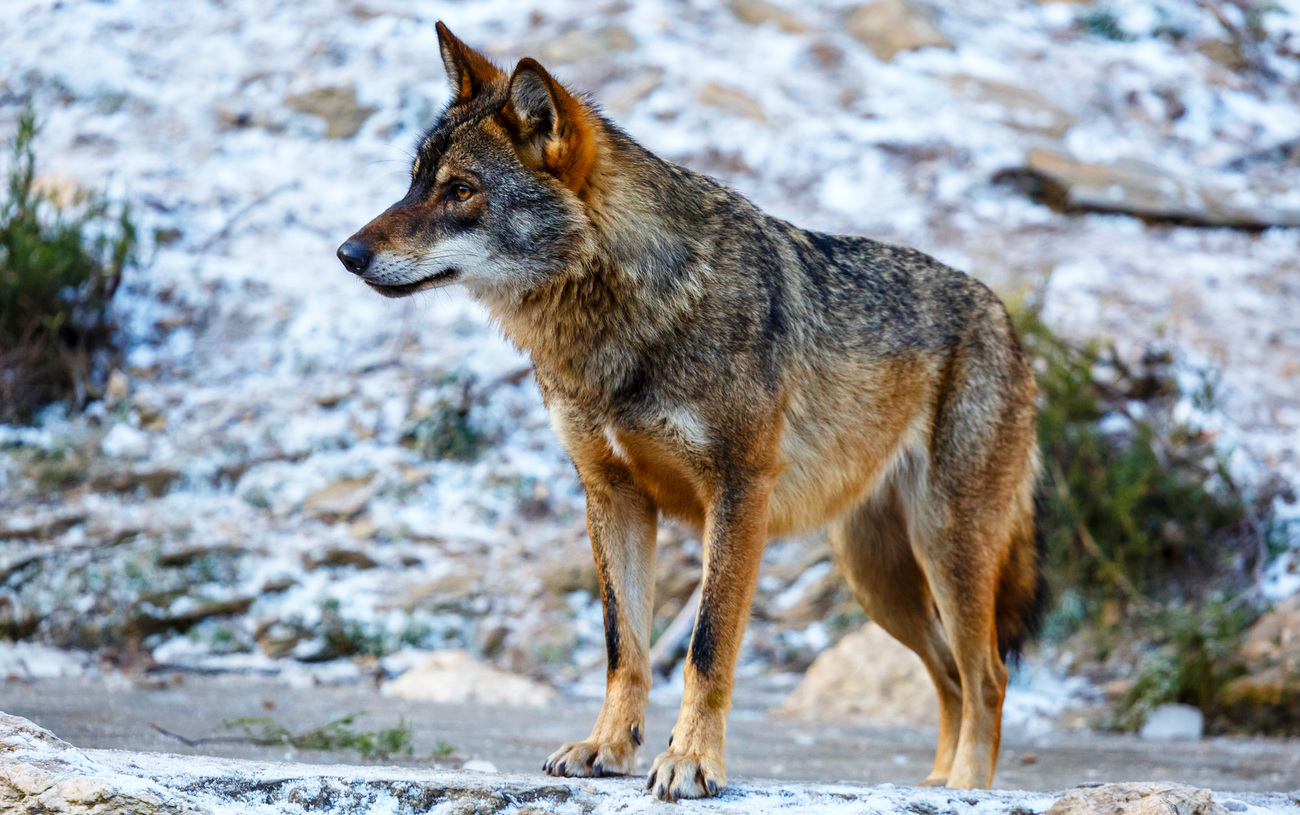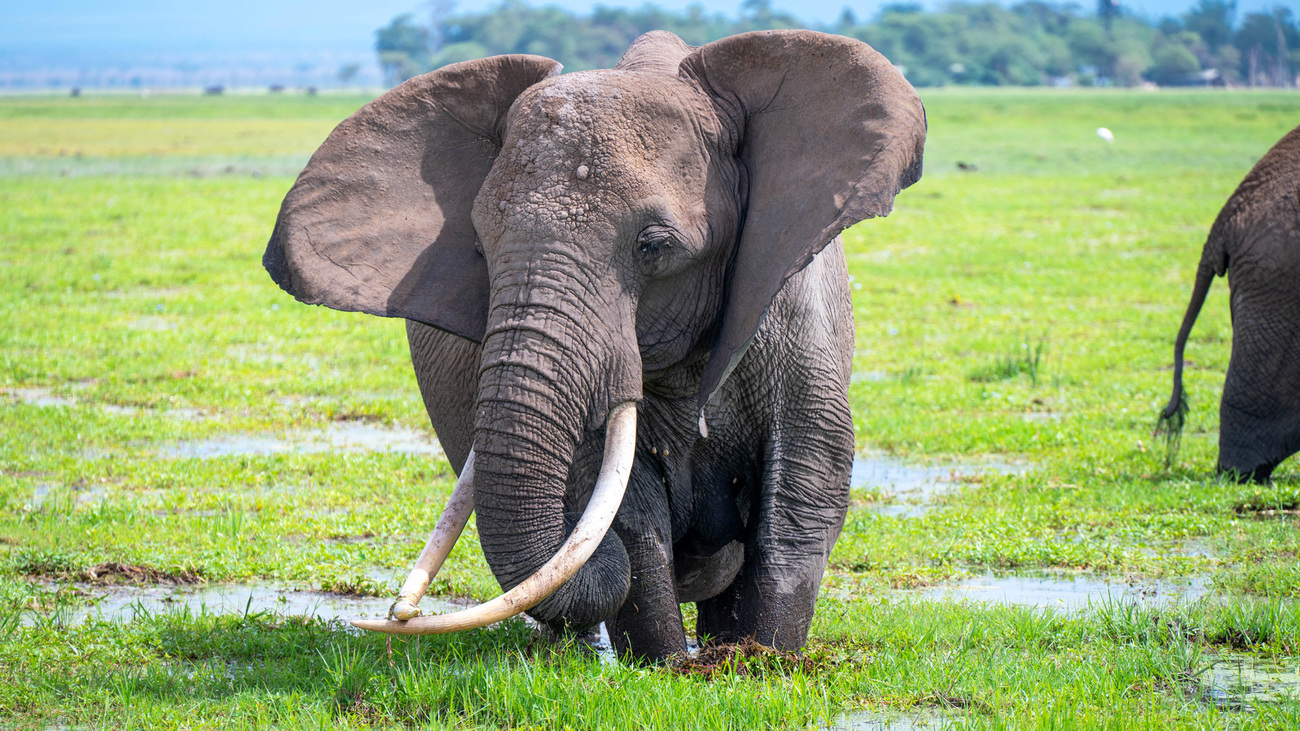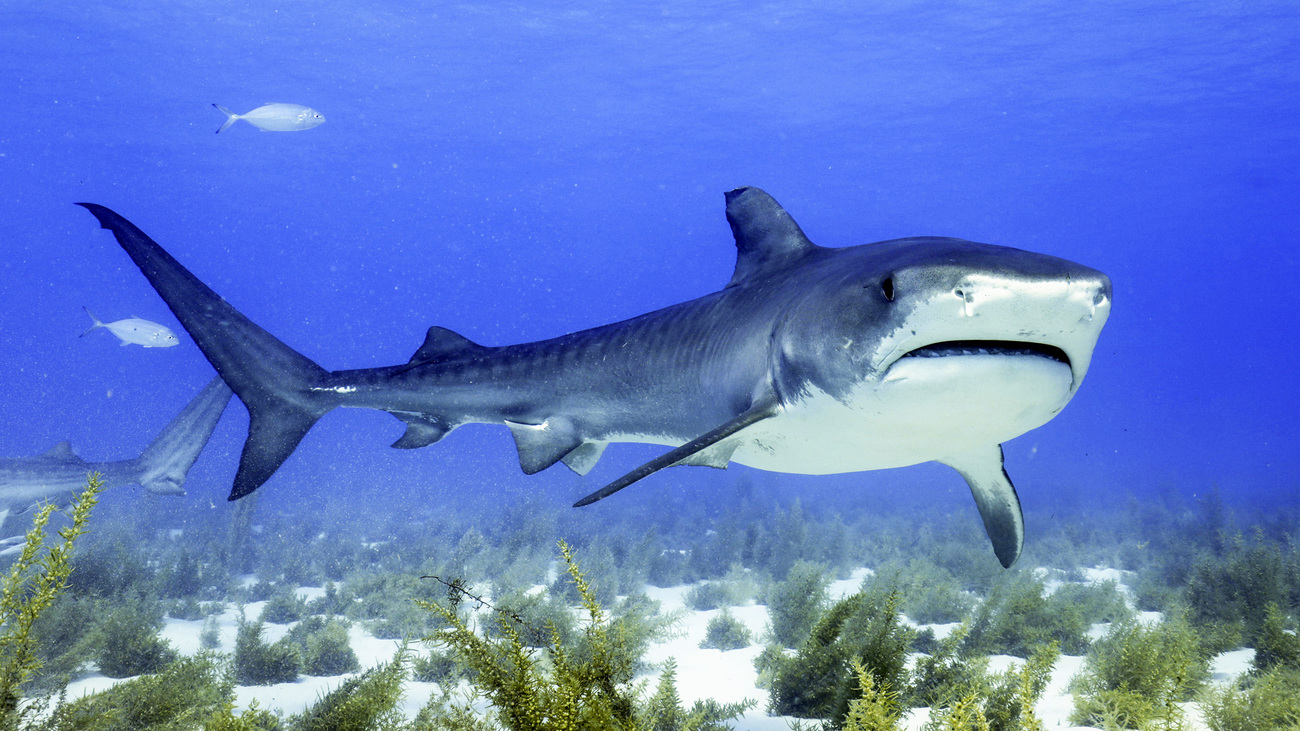Jason Bell
Executive Vice President - Strategy, Programmes & Field Operations
If there's an individual animal in distress, why would you not make every effort to try and rescue it?
The ripple effect: How protecting one species can safeguard an entire ecosystem
Biodiversity loss is often cited as a pressing issue—but what, exactly, is its effect on our daily lives? Losing even just one wild species can have a ripple effect that impacts other plants and animals, entire ecosystems, and the whole planet. As humans who not only rely on nature for its intrinsic value, but also for its resources and ecosystem services, we aren’t left out of the havoc biodiversity loss can wreak.

In the face of a changing climate, it is growing more important every day that we work to help every species on Earth adapt to new, more unpredictable conditions. Not only are animals victims of climate change, though—they are also our allies in fighting against it.
At COP16 this November, IFAW launched new guidelines to help governments integrate wildlife conservation into their climate action plans. These guidelines stem from our firm belief that national climate strategies must align with biodiversity goals. Governments must work on both crises in tandem, ensuring that conserving ecosystems and wildlife can contribute to carbon sequestration while supporting economic development and climate resilience.
When it comes to complex subjects like climate change, economic development, and biodiversity loss, it’s easy to be overwhelmed by the magnitude of the challenges we face. At IFAW, we know that healthy wildlife is one of the best solutions to these issues.
In fact, recent research shows that protecting and restoring populations of only nine species and species groups could collectively facilitate the capture of more than 95% of the CO2 needed every year to help keep global warming below the 1.5°C threshold. These are marine fish, whales, sharks, grey wolves, wildebeest, sea otters, musk oxen, African forest elephants, and American bison.
Many of these are keystone species in their ecosystems, meaning they are so important to the ecosystems’ wellbeing that they could collapse if the animals disappear. In other words, their extinction would lead to the extinction of many other species and the disappearance of important natural capital.
Let’s look at some examples of how protecting a single species can have far-reaching effects on its own ecosystem and the planet as a whole.
There are three species of elephant alive today: the African savannah elephant, the African forest elephant, and the Asian elephant. They are all endangered, with the African forest elephant being critically endangered on the IUCN Red List.
Elephants are ecosystem engineers—they physically alter the landscapes in which they live. As they travel through savannahs and forests, they trample undergrowth and tear down vegetation to eat. By thinning out tall trees and bushes, they help sunlight reach plants and animals close to the ground.
They also knock fruit and vegetables down, which benefits smaller animals that can’t reach them otherwise. They dig waterholes that become vital lifelines for other animals in dry seasons, and the seeds in their poo fertilise the land and grow into new food sources for other herbivores.
A viable elephant population would have a widespread effect on their ecosystem. Let’s look at one example: how African savannah elephants maintain the savannah landscape.
These elephants eat around 160 kilograms (350 pounds) of food per day, mostly grasses but also leaves, bark, roots, and fruit, such as mangoes and figs. Without elephants controlling the vegetation, the savannah could turn into woodland, devastatingly affecting other grazing herbivores, such as zebras and wildebeest. These grazers would face greater competition for fewer food sources and eventually start dying off. That, in turn, would affect the predators that eat grazers, like lions and hyenas.
Plus, these animals and more would suffer from losing the watering holes that elephants dig during the dry season.
And we humans would suffer, too. If the African savannahs shrink, we will lose a vital ally in fighting climate change. Although it’s difficult to measure how much carbon savannahs capture and store, one study in 2023 estimated that African drylands (including savannahs) store roughly 0.84 petagrams of carbon, or 0.84 billion metric tonnes.

Protecting elephants is essential not just for the other species living in their ecosystems but for us humans, too. That’s why our Room to Roam initiative is one of IFAW’s most ambitious conservation undertakings.
Through Room to Roam, we work to secure and connect elephant habitats, which too often become fragmented due to human action. We aim to build a future where elephants and the people with whom they share these landscapes can coexist and thrive together.
Similarly, in China and India, we work to help communities coexist with elephants through engagement and alternative livelihood projects.
There are around 90 whale species in the ocean today. While some species are doing well, others are not. For example, the IUCN classes the blue whale as endangered, and the North Atlantic right whale and Rice’s whale are critically endangered. These species face a very high risk of extinction in the wild if we do not act swiftly to protect them.
While whales sit at the top of marine food web, they play a tremendous role in supporting the plant species that form the basis of the marine food web: phytoplankton. These tiny organisms capture around 37 billion tonnes of carbon dioxide per year—about 40% of all carbon dioxide produced. Phytoplankton also produce around 50% of the world’s oxygen, which we humans (and all animals) need to breathe.
So, how exactly do whales keep this vital resource alive? Well, whales nourish phytoplankton with their poo.
Here’s how protecting one species, North Atlantic right whales, would help safeguard the entire ocean.
North Atlantic right whales migrate along North America’s eastern seaboard. While they mostly live close to the surface, they dive deep to eat zooplankton—tiny marine animals that eat phytoplankton and each other. As they dive and migrate, these whales cycle nutrients through the water, which are essential for keeping smaller species alive. By spreading nutrients, right whales contribute to habitats being diverse and complex, rather than becoming nutrient-poor dead zones.
If North Atlantic right whales thrived, so would the phytoplankton that keep marine species alive and help us all breathe. Not only do these whales fertilise phytoplankton with the nutrients in their poo, but they also eat as much as 1,100 kilograms of zooplankton every day, keeping their population under control and ensuring a healthy balance between zooplankton and phytoplankton. This balance supports countless other fish and mammal species, whether they eat phytoplankton themselves or eat the creatures that rely on them for food, including fish. Thriving fish species are vital not just for the ocean’s health, but also for the fishing industry and the coastal communities whose economies depend on it. Protecting whales thus supports the planet, marine animals, human lives, and many livelihoods.
At IFAW, our marine conservation and marine mammal rescue programmes save whales’ lives, advance cutting-edge research, and advocate for safer oceans that benefit humans and wildlife alike. Time is running out to turn the tide on extinction. That’s why we are doing everything in our power to protect whales and other vulnerable marine life across the globe.
This includes advocating for slower vessel speeds to prevent collisions, campaigning to reduce ocean noise pollution, and working with policymakers to ratify the High Seas Treaty.

More than 500 species of sharks are swimming around the planet today, but sadly around 50% of them are threatened or near threatened with extinction. Shark species that live on the high seas (pelagic sharks) have declined by 71% in the last 50 years alone.
No one knows how many sharks are killed every year, but estimates suggest up to 273 million. More than 100 million are killed by commercial fisheries—about twice what scientists estimate to be sustainable. Sharks are also vulnerable to habitat loss, pollution, and climate change.
Though popular culture has taught many people to fear sharks, what’s scarier is the thought of sharks going extinct. These marine predators keep their ecosystems healthy and help bolster climate change resilience.
Let’s look at how one species, the tiger shark, protects precious biodiversity in its ecosystem.
Tiger sharks live in tropical and warm waters, mostly along the ocean’s shelf, reefs, and slopes, though they sometimes travel to the pelagic zone (open ocean). They are scavengers that will eat almost anything—even license plates and old tires.
In the unique ecosystem of Shark Bay, Western Australia, researchers have been able to study how tiger sharks contribute to a climate-resilient habitat.
Shark Bay has one of the world’s largest, most biodiverse seagrass meadows. Seagrasses are an incredibly valuable type of ecosystem because they absorb carbon dioxide, clean the water, and support commercial fisheries and ocean biodiversity. Shark Bay’s seagrass is home (and food) for many wonderful creatures, such as the dugong and the green turtle.
However, without an apex predator like the tiger shark to keep these grazers under control, they would overconsume the seagrass until it reached a point where it couldn’t grow back. Tiger sharks don’t just hunt these animals. Their very presence in the meadows keeps dugongs and turtles from grazing too long in any particular spot.
By protecting the seagrass from overgrazing, tiger sharks also help all the small fish and other animals that depend on the grass to provide shelter, safety, and food.
Not only that, but they also keep the habitat resilient to climate shocks. Researchers discovered this after a terrible heatwave hit Shark Bay in 2011, destroying the seagrass canopy. Dugongs left the bay for a while, so scientists mimicked their eating patterns when sharks are absent. Using trowels to ‘garden’ one area where the grass had started growing back, they discovered that the seagrass canopy could not recover.
Their conclusion? Sharks are critical for recovering damaged ecosystems.
IFAW has partnered with a global coalition of shark experts and NGOs to continuously provide up-to-date scientific evidence and expertise. We have supported member countries of CITES to achieve limitations on the trade in threatened shark species—ensuring any continued trade is legally and sustainably sourced.
We also support governments to implement CITES regulations, organising shark fin identification workshops, and conducting research into regional involvement in the shark trade. Our reports that exposed the roles of Latin America and the Caribbean and the European Union have led to significant industry attention and change
One of COP16’s achievements was agreeing a new and evolved process to identify ecologically or biologically significant marine areas (EBSAs). This work began in 2010 but was stymied by legal and political concerns. The progress on EBSAs should help protect sharks further.

Wolves used to be the most widely distributed mammal in the world, but their range is now 30% smaller than it was. They have been hunted to extinction in certain areas, but conservation efforts in some areas are helping them return.
Several decades after being exterminated from the Greater Yellowstone Ecosystem in the US, wolves were reintroduced to the area in 1995. This gave biologists the rare opportunity to study what happens when a keystone species returns.
What biologists found astonished them. Wildlife flourished, from beetles to beavers to bears. Here’s why.
Yellowstone’s wolves prey on elk. Without wolves around, elk numbers grew, and they ate too much of certain plants, like young willow, cottonwood, and aspen. Beavers need willow to survive the winter, so their numbers dwindled. The lack of beavers engineering the rivers and streams with their dams badly affected the waterways and fish.
Wolves’ presence controls elk populations and means the elk move around more, giving willow and other plants a chance to recover, which in turn gives the animals relying on those plants a chance to survive. When wolves were reintroduced in 1995, Yellowstone National Park had just one beaver colony. Today, it has nine.
Plus, the elk carcasses that wolves leave behind provide a vital food source for other animals, like beetles, ravens, and even hungry bears emerging from hibernation. Many species of flora and fauna are thriving in Yellowstone, and it’s largely thanks to the presence of wolves.
Wolves are a prime example of how we can coexist and thrive alongside wildlife.
In the US and Canada, IFAW supports legislation that stops the use of poisons to kill wolves and other species. In Europe, we oppose attempts to lower the wolf’s level of legal protection and work to promote coexistence. With humane solutions rather than lethal control, we can prevent human-wildlife conflict and support ecosystems.
One way we can promote coexistence between people and wolves is by ensuring wolves don’t approach us due to the presence of unnatural food sources, such as garbage bins and feeding pets outdoors, called attractants. When we remove attractants, wolves are very unlikely to approach humans.
Another example of a humane solution is the use of deterrence devices, such as fladry. This involves mounting a rope on top of a fence, hanging strips of brightly coloured fabric. The bright colours deter wolves from livestock farms. Guardian animals, such as dogs and donkeys, can also deter wolves from livestock. In Europe, national and EU financial support is available to farmers that adopt these measures.
Jason Bell
Executive Vice President - Strategy, Programmes & Field Operations
If there's an individual animal in distress, why would you not make every effort to try and rescue it?
every problem has a solution, every solution needs support.
The problems we face are urgent, complicated, and resistant to change. Real solutions demand creativity, hard work, and involvement from people like you.
Unfortunately, the browser you use is outdated and does not allow you to display the site correctly. Please install any of the modern browsers, for example:
Google Chrome Firefox Safari